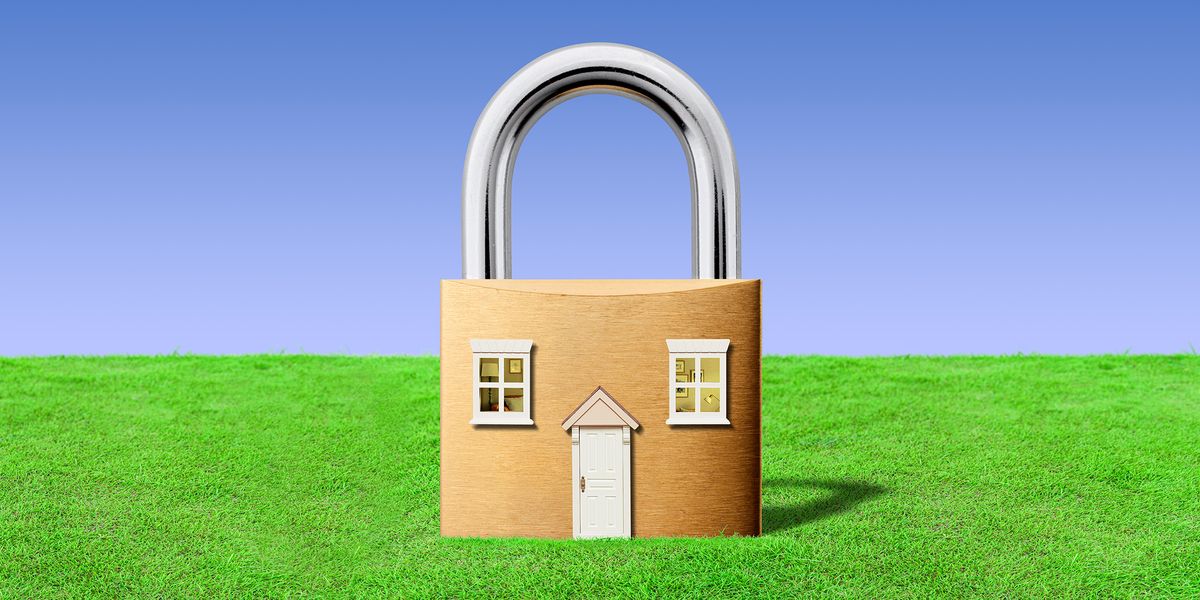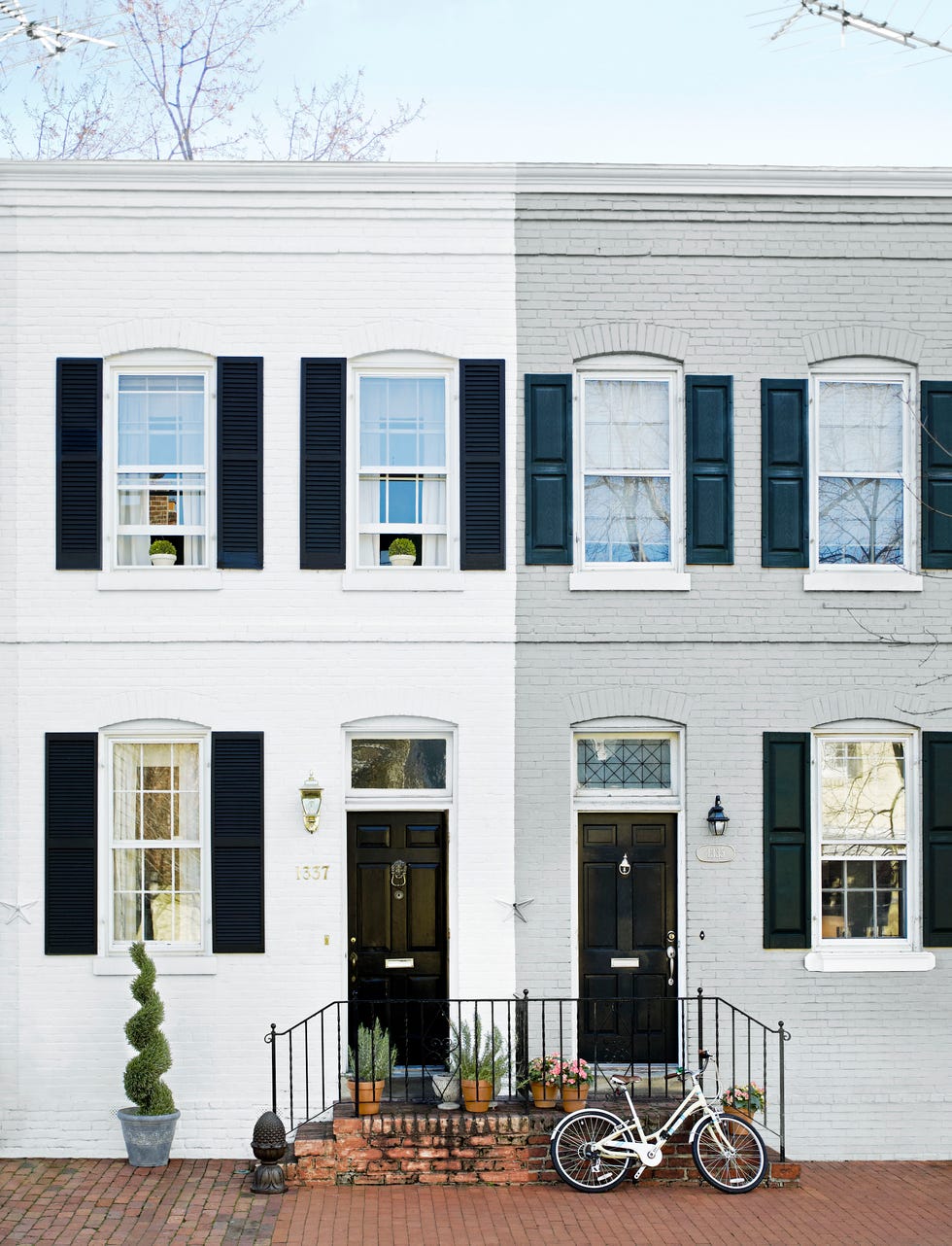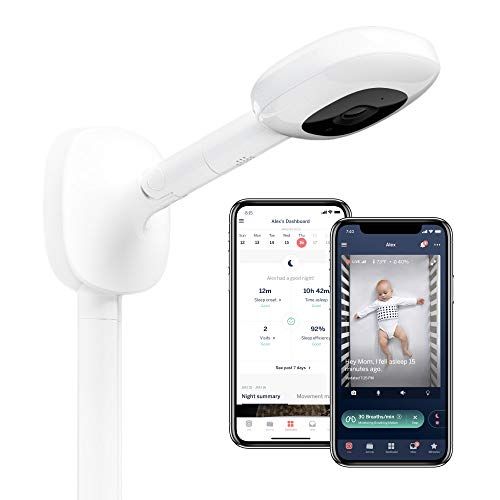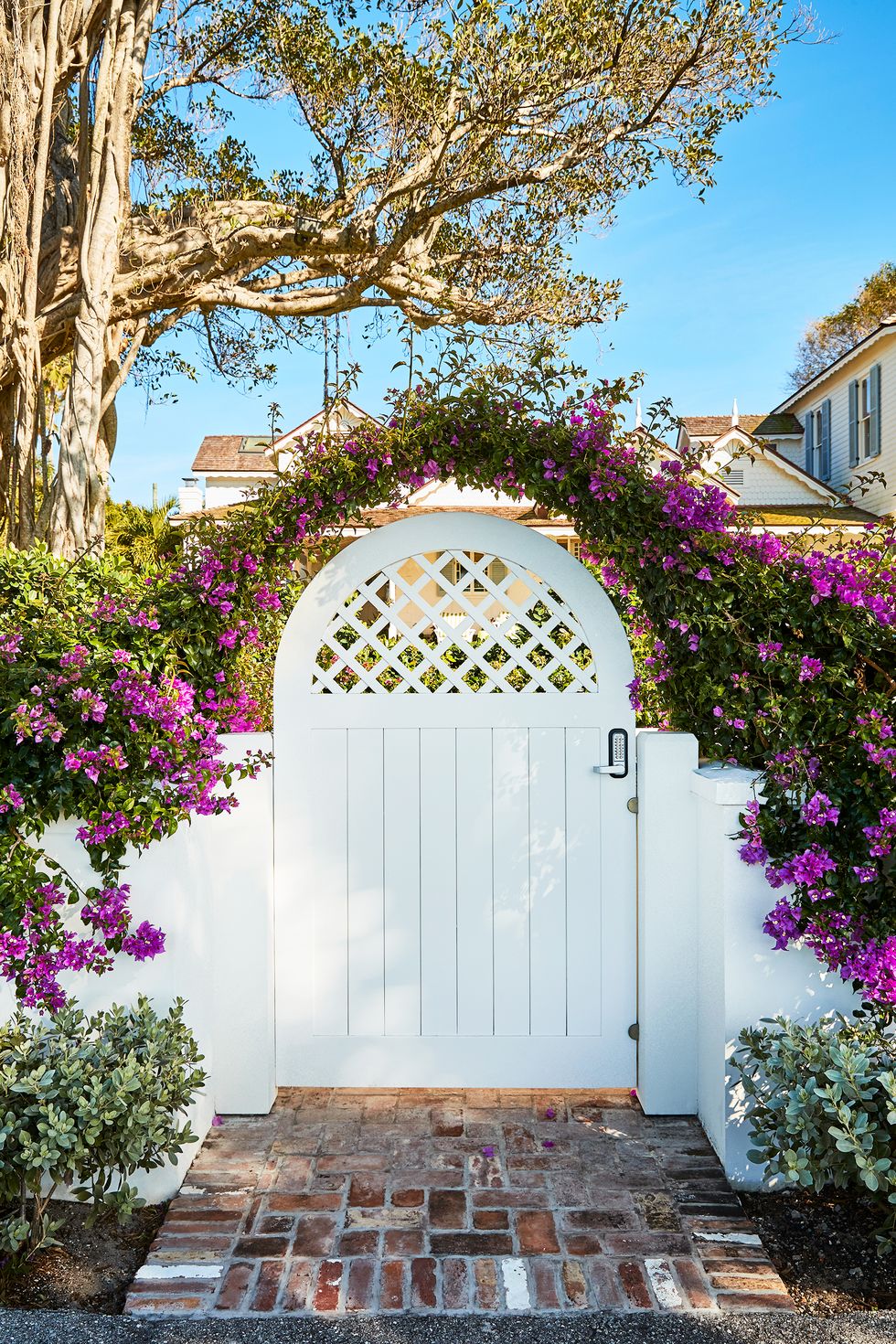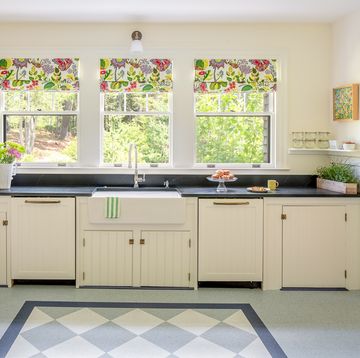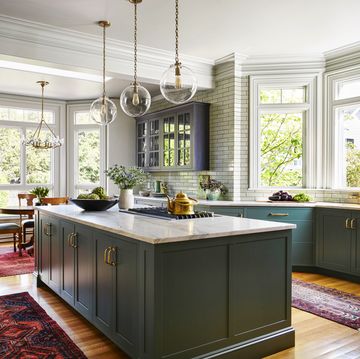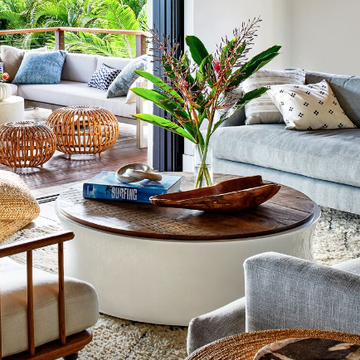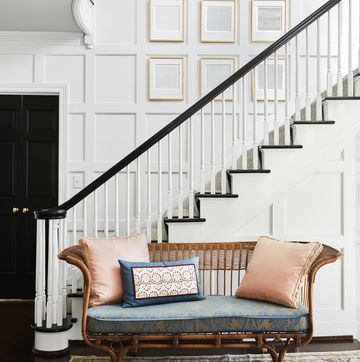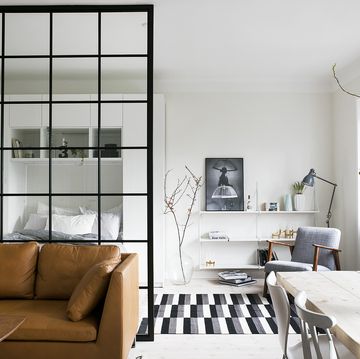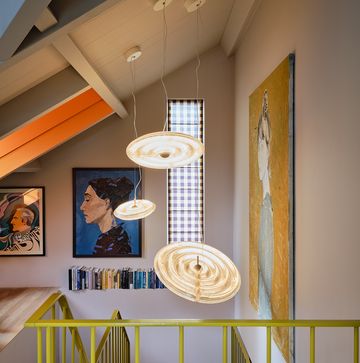Lifestyle and decorating aside, the most important ingredient for turning a house into a home is making it safe. While it may sound basic, safety is ultimately what drove humans to seek shelter in the first place; they needed a place to shield them from the threat of predators, environmental factors, and other intrusions that interfere with physical and emotional wellbeing. Obviously, life looks a little different in 2022 than it did in the Stone Age, both in terms of technological advancements and potential threats, and so naturally, home security does, too. But the end goal is still the same: A sense of safety and "home" is integral to an individual's general health and happiness (see this study and this report for more information). And the good news? With the options on the market today, you don't have to sacrifice aesthetics for a safe home.
So, let's talk about what's changed, and how people are adapting.
The Importance of Home Safety Systems
According to a pandemic-era survey of 5,000 Americans conducted by Homewise.com, done in conjunction with expert analysis of the most recent FBI crime data, the U.S. saw a .2 percent rise in violent crime from 2019 to 2020 and a very slight decrease in property crime. All the while, concern for home safety and security-related anxiety stayed the same. The difference between the level of concern over crime and an actual increase in crime may be partially due to increased exposure, in addition to staying at home more during the pandemic, which leads to more doom-scrolling. This extra exposure and easy access to news, even if only consumed by proxy through social media, can impact our hormones and lead to higher cortisol levels, which creates stress.
Indeed, designer Linda Hayslett of LH Designs tells us she's seen more people "open to security for their homes based on things going on in the news more than the size of their home or neighborhood they are in. Since we're more connected and wired to social media and the internet, people are seeing security as a typical thing to have for their homes," she posits. "Also, technology has gotten better and less expensive, so it's more accessible and easier to get different products that best suit a person's lifestyle."
So while putting down our phones and limiting our access to freaky content might help with our level of safety concerns, at the end of the day, nothing beats a comprehensive security system just in case. So, we decided to tap Travis Miller, VP of Sales for ADT, the original home security company, and two interior designers known for their tech-savvy inclusions and stylish eye for all things home-related (even the less sexy stuff, like home security systems). Keep reading to learn about the latest and greatest in home safety technologies, and to find out how you should choose the right system for your home.
Choosing the Right Security System
Start by thinking about how you'll use your security system, and why you need it, by consulting this list of 5 factors below.
Traffic
Texas-based designer Jean Liu tells us that most of her clients determine the level and scale of their security system based on how many people in their family are coming and going. "If it’s an active household, the systems tend to be less complex than with clients who may be implementing a system for their vacation homes where they might want more tabs on who, when, and why someone is accessing the house while they are not there," says Liu.
That being said, Miller notes that "the same ADT advisor might go to the same 4,000 square foot home with the same picket fence, but based on the individuals and their lifestyles and needs, the security system they end up recommending could look totally different.” In other words, a professional system is also the route when you want expert advice tailored to your exact circumstances. A security advisor will help you identify the best system for you, whether it’s a simple front porch alert system, if it means putting motion sensors on every single access point, or if it means optimizing a notification system that lets you know when someone inside the home has opened a door or window (i.e., mischievous teens and/or toddlers).
Valuables and Size
If you have a lot of valuables in the house (aside from you and your family, of course), then you may want to invest in a more targeted, comprehensive system. Things like important art, wine, car collections, and other high-valued items tend to deserve a customized security solution for extra protection. "For example, even if the home is protected by a security system, to access portions of the house displaying artwork, wine cellars, or garages, there is often a dedicated system and control panel to enter these areas," Liu says. Miller also points out that most burglars will go straight to the primary bedroom, as the assumption is that that's where the valuables are stored. So optimizing that part of the house with sensors and alert systems is also well-advised.
Tech Expertise
In general, when choosing the right security system for yourself, look for something with an intuitive and easy-to-use control panel. If you aren't super tech-savvy, the simpler the interface, the better. If you are well versed in all the intricacies of the systems, then you can add more bells and whistles. That will ensure that you actually get some use out of it. "It should be straightforward and easy to understand," designer Jean Liu clarifies. Something super straightforward will likely give you adequate protection but won't necessarily incorporate as many bells and whistles. "In the last few years, we have been involved on projects where the security systems end up being more complicated for clients to learn than they anticipated, and the end result is them not using it at all," Liu warns. In general, home security systems have gotten much simpler to use over the years.
Past Experience
A huge element of the home safety conversation comes down to the difference between one's feeling or perception of safety, and a real security threat. "I've noticed that most clients decide what works best for their home depends on how they've lived in their homes and past experiences," says Liu. If a previous break-in means you simply feel safer with a professionally monitored and installed system, then you should feel empowered to move forward in that direction.
Local Crime Rates
In the same vein as the above, the safety of your neighborhood can tell you a lot about how involved your security system needs to be. You could try talking to neighbors to see what has worked for them in the past. Building community and keeping lines of communication open with neighbors is another way to enhance the feeling of safety for everyone on your street (while respecting personal boundaries, of course).
The Best Features—and How to Use Them
Remote and Cloud-based Control
The ability to have remote access into your home is a huge game-changer. "It allows people like pet sitters and housekeepers into the home when you may not be able to be there, but you can allow them to enter based on a screen on your phone or device," Liu explains. It's basically like being your own doorman! This ability comes built into certain cameras and smart locks, like August, or software systems, like Open Path. But it's not all about security, either. A voice-activated option also encompasses the general smart perks of a smart system (often including integration to existing home networks), too, which more and more millennials are loving, notes Miller.
Cameras
A good home security system must include well-thought-out placement for all equipment and devices. For a general rule of thumb, secure your doors first. Miller explains that 70 percent of home break-ins involve a door—and even if someone breaks in through an open window, they will probably exit through a door, so if you have a sensor there that alerts the authorities for you, you'll be more protected. ADT has evolved to meet the needs of its customers over the years, so while the company still offer that high-level, professional advisor meeting and installation of a custom system, it also has more DIY options similar to Nest and Google Home. The doorbell camera, for example, has been super popular since the start of the pandemic as more and more people were ordering things online. While they can link up to an ADT call center, you can also forgo that higher-level involvement and just set up notifications (customized for what exactly you want to be alerted about) on your personal devices.
If you don't want to work with a large security company, the good news is that home security cameras are getting more affordable, smaller, sleeker, and more invisible than ever. Good ones will "blend in with the design of a home, instead of feeling like these horrible-looking products that make you feel like you're being watched inside your own house," Hayslett says.
Additionally, Liu says "the system definitely needs to have a 24-hour, 7-day a week monitoring capabilities—that means from the video recording capabilities to the station who can send someone out to the residence if the need arises." Liu recommends using HD and wide-angle cameras that allow for improved visibility, like Ring or Vivint. "We particularly like the interface on the control panel that Vivint offers," she says.
Sensors
Both designers tell us that people may as well opt for a camera system that's built into a larger security program that includes sensors, too. "Most people think cameras are the only important part of a security system, but it should also include types of locks a house has along with securing windows and any other access points in a home, lighting placement on the exterior of the home, having a fence, type of garage door and motion sensors are all parts of having a good security system," says Hayslett.
TIP: Pet owners are good candidates for sensors attached to a call center like ADT since most regular smoke detectors just beep, which can't protect a pet if they are home alone.
Things like exterior lighting with motion detection can be great deterrents for burglaries and break-ins, as they imply that a larger security system is in place. Liu encourages folks to look for systems that also include "heat, motion, and water sensors along with smoke detectors and guard against most any unwanted intrusions," she adds. Miller says that these sensors are especially popular with people who snowbirds or anyone with a home they aren't regularly in.
Smart Locks
When it comes to access points into the home or onto the property, more and more people are turning to smart locks. "I like the August Wi-fi Smart Lock for exterior doors—it's a clean look, but also functions as a great lock for when you're away and need someone to get into your home," says Hayslett. "I also like the Canary Security Systems, not only because they have a clean look, but they're also easy to install yourself and use right away if you need something quick."
And, if you're looking for something simple for your fur baby then the Petcube Play with Laser Toy or Petcube Bites with treat dispensers are fun cameras that can help keep an eye on the family pet while not at home, yet also give them treats if they have anxiety.
Try Not to Go Overboard
Finally, let's go over some major no-nos. First, there are some things you shouldn't DIY: "One of the craziest security features I ever encountered was mesh screens on windows," says Liu. "We asked painters to remove them when renovating a house and repainting the exterior. We thought they were ugly and deterred from the home’s original divided light window panes, only to learn later they were installed as a security measure. Any attempt to remove or break through the screen would set off the alarm," says Liu. So, basically, don't try to set up Home Alone-style booby traps.
Hayslett also confirms that there is a thing as going overboard. "I do think there is a point in having way too many cameras in a home," she says. "Some people think they need something in every room and in every hallway, but you want your home to be a place of relaxation, so you just need cameras placed in the right points to capture the widest range possible."
At the end of the day, you really only need what's going to work for you and make you feel safe "Many people get caught up with the different gadgets and new technology that's out there, but after a few months, they stop using the technology to its fullest," says Hayslett. "Get what's truly needed and what you'd be able to to keep up with that goes with your lifestyle. Do not get things because they look cool and fun, because, in the long run, you're wasting money on something that'll become obsolete quickly." It's all about balance.
Follow House Beautiful on Instagram.

Hadley Mendelsohn is the co-host and executive producer of the podcast Dark House. When she's not busy writing about interiors, you can find her scouring vintage stores, reading, researching ghost stories, or stumbling about because she probably lost her glasses again. Along with interior design, she writes about everything from travel to entertainment, beauty, social issues, relationships, fashion, food, and on very special occasions, witches, ghosts, and other Halloween haunts. Her work has also been published in MyDomaine, Who What Wear, Man Repeller, Matches Fashion, Byrdie, and more.
